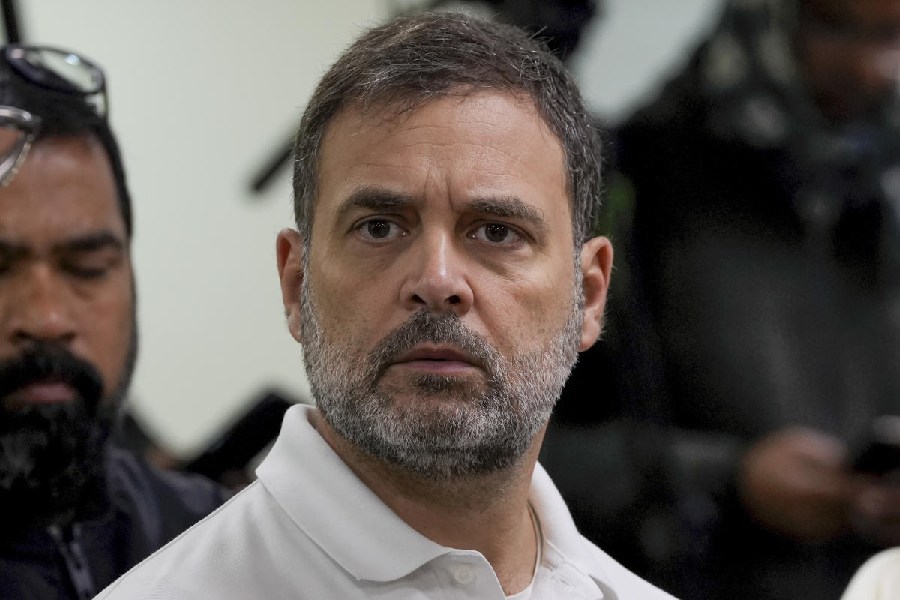The US Supreme Court appeared ready to rule that the race-conscious admissions programmes at Harvard and the University of North Carolina were unlawful, based on questioning over five hours of vigorous and sometimes testy arguments, a move that would overrule decades of precedents. Such a decision would jeopardise affirmative action at colleges and universities around the nation, particularly elite institutions, decreasing the representation of black and Latino students and bolstering the number of white and Asian ones. Questioning from members of the court’s six-justice conservative majority was sharp and sceptical.
“I’ve heard the word diversity quite a few times, and I don’t have a clue what it means,” Justice Clarence Thomas said. “It seems to mean everything to everyone.” Justice Samuel A. Alito Jr. asked a similar question about the term “underrepresented minority”. “What does that mean?” he asked, adding that college admissions are “a zero-sum game” in which granting advantages to one group necessarily disadvantages another.
If the court does away with affirmative action by the end of its current term, it would represent the second time in the space of a year that its conservative supermajority has jettisoned decades of precedent to overturn a policy that has helped define American life. But as its decision in June eliminating the constitutional right to abortion made plain, members of that majority have not hesitated to take bold steps on divisive issues.
A ruling against the universities would be further evidence of the court’s Rightward lurch after President Donald J. Trump’s appointment of three justices, and it could raise fresh questions about whether the court’s approach to precedent threatens the stability of the law and the court’s own legitimacy. Chief Justice John G. Roberts Jr, who views himself as the custodian of the court’s independence and authority, may have conflicting impulses in the cases argued Monday. He has long been critical of drawing distinctions based on race.
His questions about race-neutral means of achieving diversity suggested that he might be pursuing a characteristically incremental path. That approach could limit the sweep of a decision rejecting race-conscious programmes. In general, two themes ran through questions from the court’s conservatives: that educational diversity can be achieved without directly taking account of race and that there must come a time when colleges and universities stop making such distinctions.
The court’s three liberal members put up a spirited defence. Justice Sonia Sotomayor said, “Race does correlate to some experiences and not others.” “If you’re black,” she said, “you’re more likely to be in an underresourced school. You’re more likely to be taught by teachers who are not as qualified as others. You’re more likely to be viewed as having less academic potential.” Justice Ketanji Brown Jackson said it would be odd if admissions officers could consider factors like whether applicants were parents, veterans or disabled — but not if they were members of racial minorities. That has “the potential of causing more of an equal protection problem than it’s actually solving”, she said.
Justice Elena Kagan said she was worried about “a precipitous decline in minority admissions” if the court were to rule against affirmative action in higher education. “These are the pipelines to leadership in our society,” she said of elite universities. Over the course of the argument, the justices discussed with seeming approval several kinds of race-neutral approaches: preferences based on socioeconomic status; so-called top 10 programs, which admit students who graduate near the top of their high school classes; and the elimination of preferences for children of alumni and major donors, who tend to be white.
Justice Amy Coney Barrett asked whether it would be permissible for minority students to write essays describing their experiences with race discrimination. Patrick Strawbridge, a lawyer for Students for Fair Admission, the group challenging the programmes, said that was fine. “What we object to,” he said, “is a consideration of race and race by itself.” Personal essays are different, he said.
“It tells you something about the character and the experience of the applicant other than their skin colour,” he said. Similarly, Strawbridge said, an Asian American student might write about travelling to a grandparent’s home country. Chief Justice Roberts said that such a student would not be a “very savvy applicant” because “the one thing his essay is going to show is that he’s Asian American, and those are the people who are discriminated against”. Seth P. Waxman, a lawyer for Harvard, later said that it did not discriminate against Asian American applicants, though he did not contest that on average they received lower ratings for personal qualities at an early stage of the admissions process.
(New York Times News Service)











